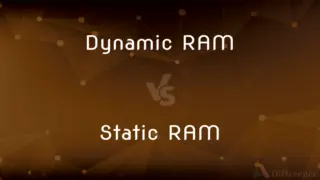Collusive Oligopoly vs. Non-Collusive Oligopoly — What's the Difference?
By Tayyaba Rehman — Published on December 26, 2023
Collusive Oligopoly involves firms coordinating to set prices or outputs. Non-Collusive Oligopoly is when firms compete without agreements.

Difference Between Collusive Oligopoly and Non-Collusive Oligopoly
Table of Contents
ADVERTISEMENT
Key Differences
Collusive Oligopoly is a market structure where a few dominant firms make explicit or implicit agreements to set prices, outputs, or market shares. In a Non-Collusive Oligopoly, these dominant firms do not make any such agreements and compete independently.
In a Collusive Oligopoly, firms come together to maximize their joint profits, acting like a monopoly. On the other hand, in a Non-Collusive Oligopoly, firms make decisions based on their own individual interests, often leading to competition on prices, products, and advertising.
Firms in a Collusive Oligopoly face the risk of anti-trust or competition law violations. Meanwhile, those in a Non-Collusive Oligopoly can fiercely compete, resulting in potential price wars and aggressive marketing campaigns.
A Collusive Oligopoly can lead to higher prices and restricted outputs for consumers, mimicking monopolistic behavior. In contrast, a Non-Collusive Oligopoly often results in competitive prices, product innovations, and diverse choices for consumers.
Stability is often observed in a Collusive Oligopoly since firms avoid price wars. However, in a Non-Collusive Oligopoly, the market can be unpredictable with firms constantly reacting to competitors' strategies.
ADVERTISEMENT
Comparison Chart
Nature of Interaction
Firms cooperate.
Firms compete.
Outcome for Consumers
Higher prices, limited choices.
Competitive prices, diverse choices.
Risk of Legal Action
High (anti-trust violations).
Low.
Market Stability
More stable.
Less stable.
Innovation and Advertising
Less incentive for innovation.
High incentive for innovation.
Compare with Definitions
Collusive Oligopoly
An oligopoly where firms make agreements to restrict competition.
If two dominant smartphone producers in a collusive oligopoly decide on a fixed price, consumers have fewer affordable options.
Non-Collusive Oligopoly
Few firms in a market that don't make agreements on pricing or output.
In a non-collusive oligopoly, streaming platforms offer varied subscription prices.
Collusive Oligopoly
Few market players working together to set prices or outputs.
In a collusive oligopoly, airline companies might set high ticket prices during peak seasons.
Non-Collusive Oligopoly
Dominant firms competing fiercely without collaboration.
Smartphone producers in a non-collusive oligopoly constantly innovate to outdo each other.
Collusive Oligopoly
Firms in an oligopolistic market collaborating to maximize joint profits.
Major coffee chains in a collusive oligopoly might agree to not offer promotions at the same time.
Non-Collusive Oligopoly
A market structure where dominant firms compete without any coordination.
In a non-collusive oligopoly, tech giants launch products without considering competitors' release dates.
Collusive Oligopoly
A market scenario where few firms collaborate on pricing and output decisions.
Major oil companies in a collusive oligopoly might agree to set similar gasoline prices.
Non-Collusive Oligopoly
Oligopolistic market where firms constantly react to competitors' strategies.
In a non-collusive oligopoly, airlines frequently change ticket prices based on competitors' rates.
Collusive Oligopoly
An arrangement among oligopolists to reduce uncertainties.
Beverage companies in a collusive oligopoly can agree not to offer discounts simultaneously.
Non-Collusive Oligopoly
Oligopoly where each firm acts based on its own interests, not joint interests.
Shoe brands in a non-collusive oligopoly might have varying prices and designs.
Common Curiosities
Is market stability higher in Collusive Oligopoly?
Yes, Collusive Oligopoly tends to be more stable as firms avoid competitive actions like price wars.
What's the key distinction between Collusive and Non-Collusive Oligopoly?
Collusive Oligopoly involves firms collaborating on decisions, while Non-Collusive Oligopoly involves firms competing without coordination.
Which oligopoly type promotes more innovation?
Non-Collusive Oligopoly, since firms compete fiercely, often leading to more innovation.
How do firms in a Collusive Oligopoly maximize profits?
They collaborate to act like a single monopoly, setting prices and outputs to maximize joint profits.
How can a Collusive Oligopoly harm consumers?
It can lead to higher prices and restricted product choices, similar to monopolistic behavior.
Can there be secret agreements in a Collusive Oligopoly?
Yes, firms in a Collusive Oligopoly can have explicit (open) or implicit (secret) agreements.
Can firms in a Collusive Oligopoly face legal actions?
Yes, firms in a Collusive Oligopoly risk anti-trust or competition law violations.
Can advertising strategies differ in Non-Collusive Oligopoly?
Yes, in a Non-Collusive Oligopoly, firms often employ diverse advertising campaigns to outdo competitors.
Do consumers benefit more from Non-Collusive Oligopoly?
Typically, Non-Collusive Oligopoly offers consumers more competitive prices and diverse choices.
Are price wars common in Non-Collusive Oligopoly?
Yes, in a Non-Collusive Oligopoly, firms might engage in price wars to gain market share.
Why might firms prefer a Collusive Oligopoly?
To reduce uncertainties, avoid price wars, and ensure stable profits.
Are cartels a form of Collusive Oligopoly?
Yes, cartels are a type of Collusive Oligopoly where firms explicitly agree on prices and outputs.
Do all firms in a Collusive Oligopoly have equal power?
Not necessarily. Some firms might have more influence over decisions than others.
Which oligopoly type is more unpredictable?
Non-Collusive Oligopoly is more unpredictable due to constant reactions to competitors' actions.
Share Your Discovery

Previous Comparison
Nervous Breakdown vs. Mental Breakdown
Next Comparison
Dynamic RAM vs. Static RAMAuthor Spotlight
Written by
Tayyaba RehmanTayyaba Rehman is a distinguished writer, currently serving as a primary contributor to askdifference.com. As a researcher in semantics and etymology, Tayyaba's passion for the complexity of languages and their distinctions has found a perfect home on the platform. Tayyaba delves into the intricacies of language, distinguishing between commonly confused words and phrases, thereby providing clarity for readers worldwide.












































